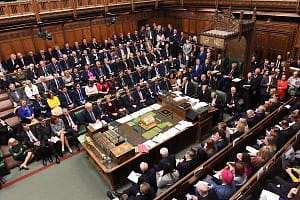NS&I has said the new Green Savings Bond will run on a three year term.
The current best fixed term bond over three years offers interest of 1.3%, according to Money facts.
But the government can already borrow money for three years at 0.2%, which it could then use to fund the same green projects.
If the Treasury wanted to match the best buy rate, on £15 billion worth of borrowing, that 1.1% differential adds up to £165 million a year, or roughly £0.5 billion over 3 years.
Laith Khalaf, financial analyst at AJ Bell, comments: “The new Green Savings Bond will be a welcome addition to the cash market, offering savers a green home for their money that’s secure and transparent. But the rub is that to offer a market leading rate, the government would need to pay significantly more interest than its normal cost of borrowing.
“The Green Savings Bond will run on a three year term, over which period the government can currently borrow money at just 0.2% per annum. The best three year bond currently available on the market pays 1.3% a year, so if the Treasury wants the product to be a market leader, at the moment it would need to offer at least this level of interest. On the £15 billion of funding envisaged, that would mean a cost of £165 million to the taxpayer each year above simply tapping up the gilt market. Even at the best of times that would seem like a sizeable sum to be saddling the Exchequer with, and clearly government finances are under extreme pressure after the cost of the pandemic response.
“The Treasury may therefore opt for a lower rate, and rely on the green credentials of the bond and the financial security provided by NS&I to do the heavy lifting. The lower they go though, the higher the chances of the product being a flop. Savers showed themselves more than willing to vote with their feet when NS&I slashed rates on some of its most popular accounts last November, and many may already be feeling a bit twitchy about locking money away for three years, when over that time frame, interest rates may rise. Those who also have ESG investment funds will be well aware of their strong performance of late, and may no longer acquiesce to accepting lower rates of return for backing environmental causes. Setting the interest rate will be a real challenge for the Treasury, to strike the right balance between the needs of savers and taxpayers.”






Leave a Comment